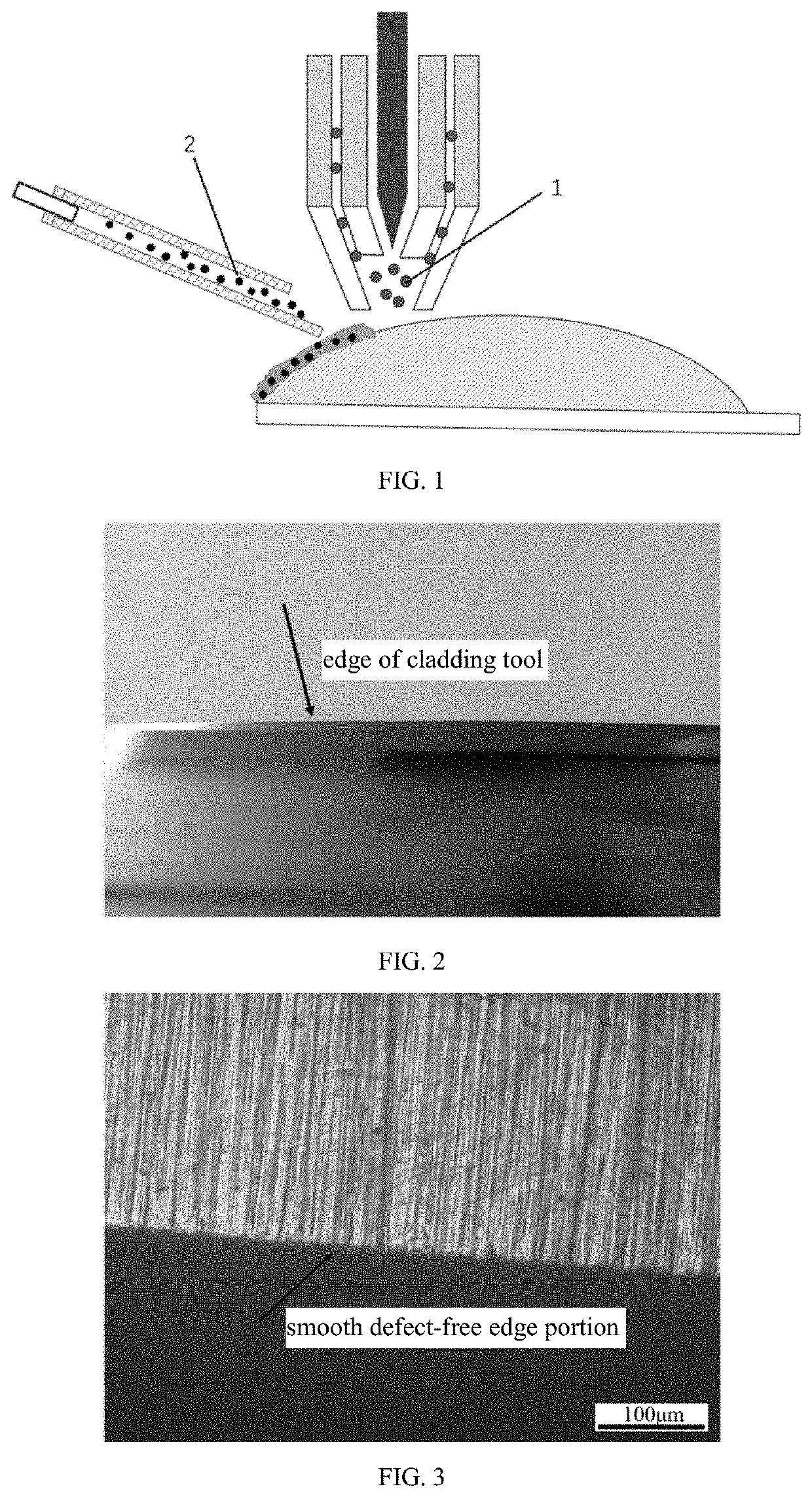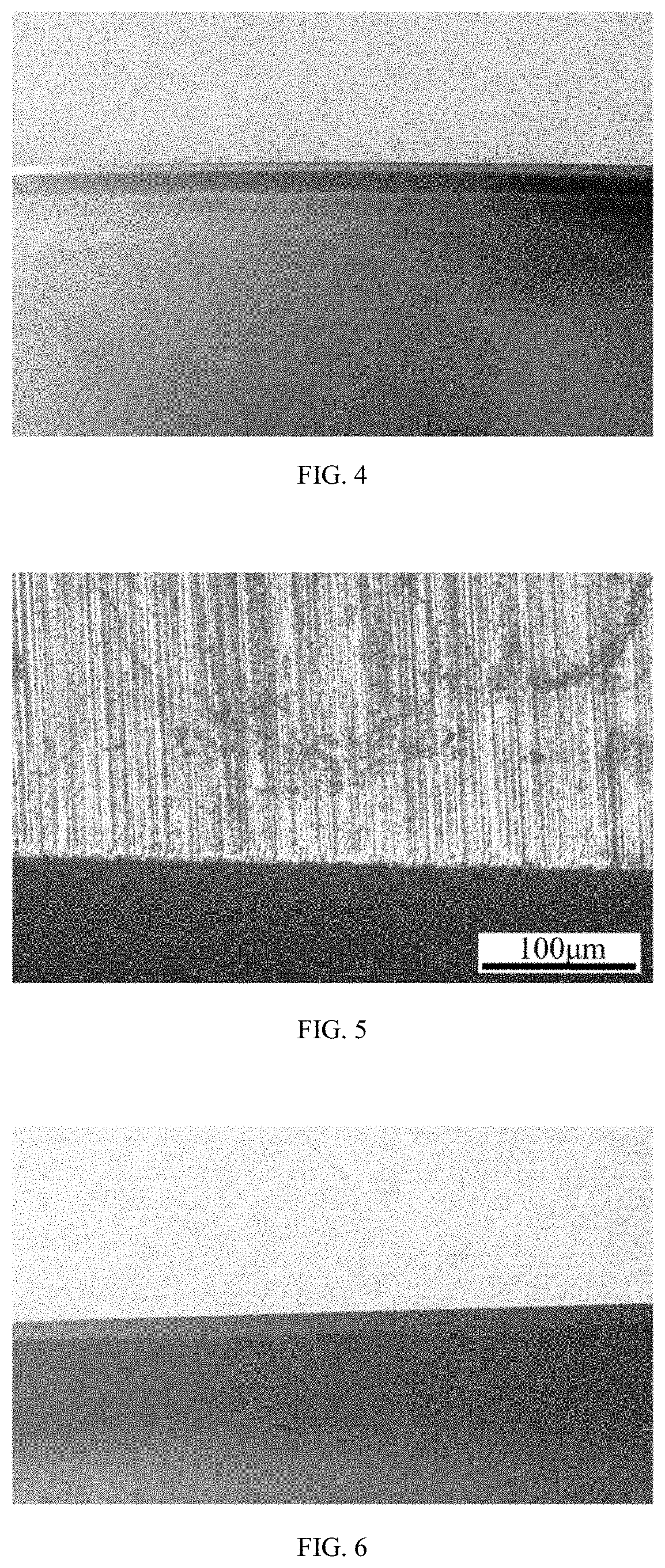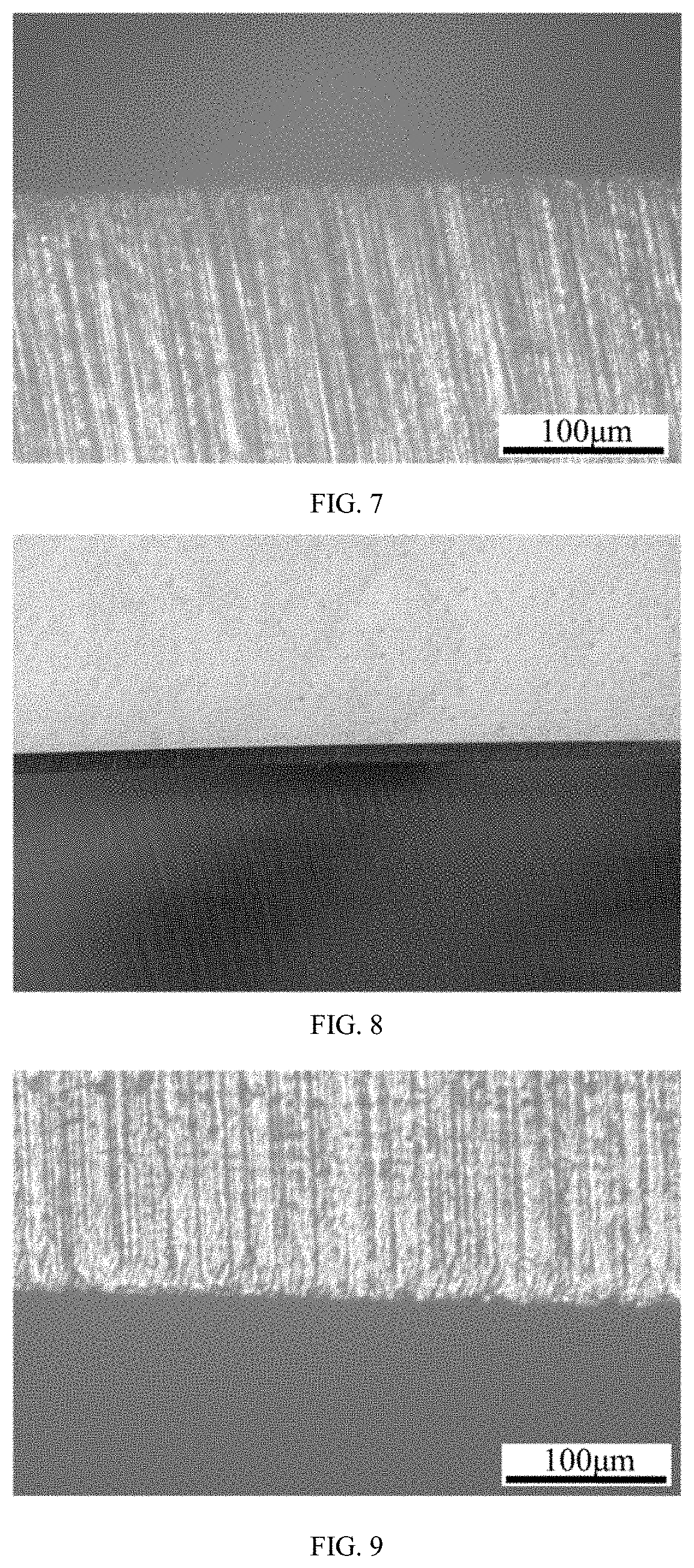Tool Coating Processing Method
a technology of coating and coating, applied in the field of material processing, can solve the problems of easy blockage of powder feeding pipes, easy peeling of hard phase particles with large particle size in the coating, and complex solid phase reaction
- Summary
- Abstract
- Description
- Claims
- Application Information
AI Technical Summary
Benefits of technology
Problems solved by technology
Method used
Image
Examples
example 1
[0077]FIG. 1 shows a schematic diagram of processing, a bonding phase 1 powder is fed from a coaxial powder feeding channel, and a reinforcing phase 2 powder is fed from a side powder feeding channel.
[0078]A tool coating processing method includes:
[0079]Molten pool forming step: a bonding phase is converged to a plasma arc heat source by means of a coaxial powder feeding channel, and the bonding phase is deposited on a tool base material (3Cr13) after melting, so as to form a molten pool. The bonding phase is stainless steel 3Cr13 (with a density of 7.75 g / cm3), and has a powder size of 53-105 μm. A distance between a discharge nozzle of the coaxial powder feeding channel and the tool base material is 8 mm, and a feeding velocity of the bonding phase is 10 g / min.
[0080]Reinforcing phase adding step: a reinforcing phase is fed by means of a side powder feeding channel into the molten pool after a plasma beam is removed. The reinforcing phase is niobium carbide with a density of 7.8 g / ...
example 2
Tool Coating Processing Method
[0087]In contrast to Example 1, a mass ratio of the bonding phase to the reinforcing phase is 3:2.
[0088]The bonding phase has a particle size of 105-180 μm, the reinforcing phase has a particle size of 10-25 μm and a Hall flow velocity of 17 s / 50 g. The remaining processing parameters are the same as in Example 1.
[0089]FIGS. 4-5 show the surface morphology and metallograph of the tool after edge opening are free from corrosion and peeling-off of reinforcing phase particles.
example 3
Tool Coating Processing Method
[0090]In contrast to Example 1, a mass ratio of the bonding phase to the reinforcing phase is 3:7.
[0091]The bonding phase has a particle size of 120-200 μm, the reinforcing phase has a particle size of 15-25 μm and a Hall flow velocity of 16.5 s / 50 g. The remaining processing parameters are the same as in Example 1.
[0092]FIGS. 6-7 show the surface morphology and metallograph of the tool after edge opening are free from corrosion and peeling-off of reinforcing phase particles.
PUM
| Property | Measurement | Unit |
|---|---|---|
| size | aaaaa | aaaaa |
| density | aaaaa | aaaaa |
| particle size | aaaaa | aaaaa |
Abstract
Description
Claims
Application Information
 Login to View More
Login to View More - R&D
- Intellectual Property
- Life Sciences
- Materials
- Tech Scout
- Unparalleled Data Quality
- Higher Quality Content
- 60% Fewer Hallucinations
Browse by: Latest US Patents, China's latest patents, Technical Efficacy Thesaurus, Application Domain, Technology Topic, Popular Technical Reports.
© 2025 PatSnap. All rights reserved.Legal|Privacy policy|Modern Slavery Act Transparency Statement|Sitemap|About US| Contact US: help@patsnap.com



